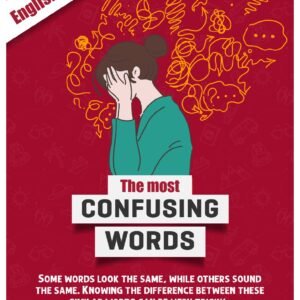How to keep an English conversation going?
It can be difficult to keep a conversation going. Even if you understand what the other person is saying, you can feel “blocked” or “frozen” when it’s your turn to speak. The words or phrases you need don’t often come quickly enough to mind.
The more opportunities you can get to use and speak English, the easier it is to find the right words when you need them then. Take every chance you get to use your English! See how to practise your English for lots of ideas to find speaking opportunities.
Sounding fluent and confident in a few words. Here are some useful ways to keep the conversation going. The “secret” is that you don’t actually need many words to do this!
- Show interest in the other speaker
You don’t need to say much. Often just one word is needed to show you are interested and listening. Try “Really?” (with a rising intonation), “Right” or “Sure”. You could even show you are listening with a non-word such as “Mmm” or Uh-huh”.
- “I hate watching rubbish on the TV.”
- “Right.”
- Use a short phrase to show your feelings
For example, “How awful”, “Oh no!”, “You’re joking”, “What a pity” etc.
- “My neighbour had a car accident yesterday.”
- “Oh no!”
- “Yes, but thankfully he wasn’t hurt.”
- “Mmm.”
- Ask a short question
You can use an auxiliary verb to make a short question which will encourage the other speaker to keep talking:
- “We tried out the new Chinese restaurant last night.”
- “Did you?”
- “I’m going to Barbados next week on holiday.”
- “Are you? Lucky you!”
- “It’s snowing again.”
- “Is it?”
- Repeat what the other person said
Do this especially if the other person has said something surprising.
- “He won £200 on the lottery.”
- “£200!”
- “I’m going to Barbados next week.”
- “Barbados!”
** Other ways to avoid silence:
Here are some more tips to help you say something – even if you haven’t understood the other person or there’s nothing else to say.
- If you don’t understand
“Sorry, I don’t understand.”
“Sorry, could you repeat that?”
“Sorry? I didn’t get that.”
- If you don’t know the word
“I can’t find the word I’m looking for…”
“I’m not sure that this is the right word, but…”
“What I want to say is…”
- If you can’t find the word immediately
You don’t want to be completely silent, but you need time to find the words.
“Well…”
“OK…”
“So…”
You can even make some “noises”
“Hmmm…”
“Uh-huh”
“Umm…”
- Agreeing with the other person
You want to show that you agree, but you don’t have anything else to say.
“Yeah.”
“Right.”
- Changing the subject
Everyone in the conversation has given an opinion, and now you want to talk about something else.
“Anyway,…”
“Well, as I was saying…”
“So, back to …”
“So, we were saying …”
- Rephrase
Sometimes we say things that other people don’t understand, or we give the wrong impression. Here are some expressions you can use to say something again.
“What I meant to say was…”
“Let me rephrase that…”
“Let me put this another way…”
“Perhaps I’m not making myself clear…”
- Go back to the beginning
If you’re explaining something, and you realise that the other person doesn’t understand, you can use the following phrases:
“If we go back to the beginning…”
“The basic idea is…”
“One way of looking at it is…”
“Another way of looking at it is…”
If you enjoyed this article, please share and comment below!
English With Nab😉
















Thanks for the recommendation 👍
Thnk u sir , these are good teniques … I try to learn this 😂
Thank you soo much sir it is very helpful …..💫
That is really helpful. Actually I use some of them and didn’t know they were right way 😄😄
Thank you for these ideas 💡😊
Thank you so much 🥰 i can read and talk English not good but i do , and this article too useful . Thank you again.
Thank you for sharing
Very useful 🙏🏼❤️